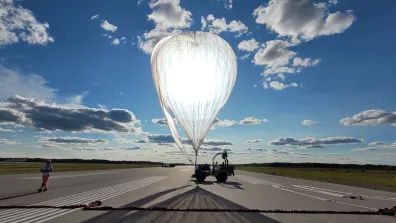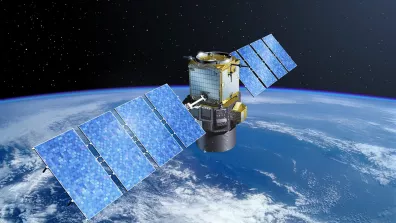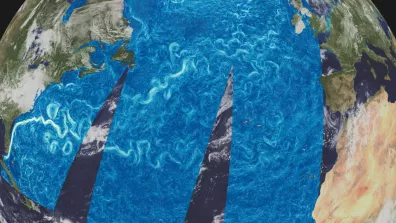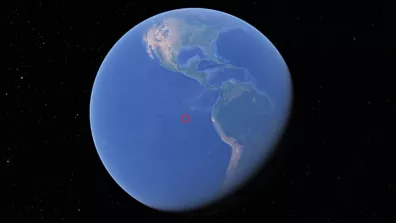Published on April 30, 2024
In the high latitudes of Sweden, surrounded by pine forests, the TRANSAT 2024 zero-pressure stratospheric balloon (BSO – Ballons Stratosphériques Ouverts) release campaign will take place in June. Organised by CNES from the Esrange base in Kiruna, this new campaign will involve three BSOs.
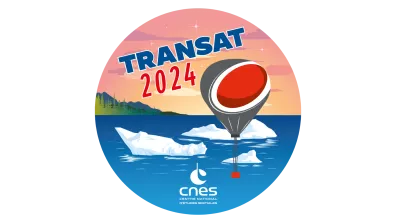
The three flights, named Sapheraller, Transat and Atmosfer, will carry a total of 25 scientific instruments and experiments in their gondolas.
Developed and operated by French and international laboratories, these different payloads will be used for research in Earth observation and the sciences of the universe, to study clouds and suspended particles, as well as radiation streams and their impact on living organisms and electronic equipment.
More than just a campaign for releasing balloons with scientific payloads, TRANSAT 2024 is a challenge for the CNES balloonist teams.
This campaign involves a large-scale organisation, with around 90 tonnes of equipment being shipped from France to Sweden. Scientists will use this equipment on site to integrate the instruments into the gondolas, and also to monitor the flights of the various balloons by setting up a control room. This will be particularly useful for the Transat flight, which will cross the Atlantic at an altitude of 40 kilometres.
- Deputy director of the CNES Balloons sub-directorate and head of the TRANSAT 2024 campaign

A first, and a challenge for the teams
The aim of the transatlantic flight is to demonstrate the ability of the French teams to fly a BSO over a long period. The balloon, weighing in at an imposing 2.9 tonnes, will have an envelope of over 800,000m3, almost six times the volume of the Arc de Triomphe. It will cross the Atlantic Ocean borne by easterly winds, then fly over Greenland and stop in Canada's far north, where the balloon envelope and gondola will be recovered by a French-Canadian team led by the Canadian Space Agency (CSA).
Stéphane Louvel understood that such a daring flight could not be left to chance and that the preparation would have to take into account aspects such as safety, communication links, power supply and the weather.
The mission leader explains the challenges of the flight and the systems developed for this demonstration:
"For Transat, one of our main challenges is to be able to follow the progress of the flight precisely and interact with the scientific instruments on board, even over the ocean or in the regions furthest from the tracking stations. To make up for this communication gap, CNES has deployed a remote station at Kangerlussuaq on the west coast of Greenland. In addition, we have doubled our on-board/ground links by adding an Inmarsat satellite link as a back-up system for the Iridium links already in place in our operational service gondola.
The flight autonomy of the payload gondolas has also been upgraded with the development of an on-board renewable energy system called MEDOR, which allows us to deploy solar panels under the gondola. It is installed on a horizontal axis of rotation so that it is constantly pointing towards the Sun and providing the energy output needed for the scientific instruments, while limiting the number of on-board batteries.""
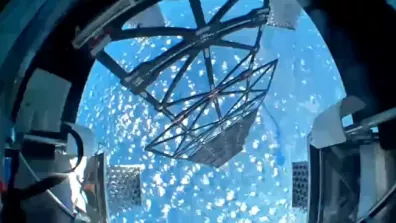
The transatlantic flight of a BSO, whose polyethylene envelope is only 15 microns thick – a quarter of the thickness of a human hair – will provide an opportunity to demonstrate the ability of this type of balloon to withstand radiation. It should also confirm that these flights can take scientific measurements over a wide spatial window in the upper stratosphere, and thus go beyond the limits of the usual vertical measurements over given areas of the stratosphere.
Today, the teams are hard at work completing the necessary preparations so that the campaign can begin in June.
Stéphane Louvel concludes: « Qualification of new resources, such as on-board/ground links, tests and rehearsals for releases at our Aire-sur-l'Adour site, finalisation of safety submissions for flight authorisations: we still have a lot to do to ensure that these operations run smoothly... in fact, the campaign has already begun. »



